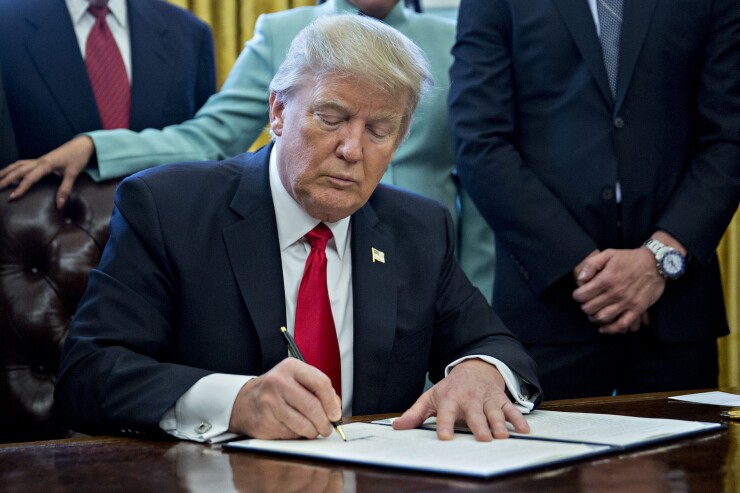(Bloomberg) — The Trump administration took a step closer to lifting the veil on opaque health-care prices Friday, advancing two regulations intended to give consumers more information about what they pay for medical services.
Administration officials said the policies would create a transparent marketplace where people know how much they will have to pay before receiving medical care and can compare prices from competing hospitals. Industry groups representing hospitals and insurance companies criticized the proposal, and the hospital industry said it would challenge it in court.
“American patients have been at the mercy of a shadowy system with little access to the information they need to make decisions about their own care,” Health and Human Services Secretary Alex Azar said on a call with reporters Friday.
He said the new rules would be a shift toward giving patients more control.
President Donald Trump is eager to have healthcare accomplishments to tout as the 2020 presidential campaign intensifies. A promised attempt to overturn the Affordable Care Act failed in 2017, and he has been unable to find common ground with Democrats in the House on a bill to lower drug prices, despite broad bipartisan agreement that costs need to come down.
Other administration efforts to make healthcare prices easier to understand have encountered obstacles this year. A proposal that would have forced pharmaceutical companies to disclose drug prices in ads was shot down by a federal judge, and an attempt to end drug-plan rebates was abandoned.
Trump is expected to speak about the policy changes later this afternoon at the White House.
Reimbursement rules
One of the rules proposed Friday would force health insurers and hospitals to shed more light on the reimbursement rates they negotiate. Usually, those are private contracts that aren’t disclosed. The proposal would also make health plans give their members upfront estimates of cost-sharing, or the portion of their medical bills that consumers are responsible for directly.
The administration is also finalizing a previously proposed rule to make hospitals publish information about the sticker prices that they set before any discounts negotiated with insurance companies. The rule also requires more detail on the cost of “shoppable services” to give consumers the ability to compare prices.
Under that provision, some 6,000 hospitals nationwide must disclose their standard charges for 300 procedures such as hip replacements and tonsillectomies in an easy-to-read format. Those requirements would take effect Jan. 1, 2021.
The penalties for hospitals that don’t comply with the new rule include maximum fines of $300 per day, or about $110,000 a year, an amount that’s negligible on most hospital budgets.
Both rules will require some price information to be made available online in a consumer-friendly fashion. They will also force more detailed data into the public realm, such as prices hospitals set organized by billing code, that may be valuable to researchers, employers and technology companies.
Industry pushback
The healthcare industry plans to fight. The rule forcing hospitals to disclose negotiated rates is “a setback in efforts to provide patients with the most relevant information they need to make informed decisions about their care,” according to a joint statement from the American Hospital Association, the Association of American Medical Colleges, the Children’s Hospital Association, and the Federation of American Hospitals.
The groups said they were preparing a legal challenge.
Insurance-industry groups were also critical. The rules won’t help consumers better understand their out-of-pocket costs and “may have negative, unintended consequences — including price increases,” Scott Serota, CEO of the Blue Cross Blue Shield Association, said in a news release.
“Transparency should be achieved in a way that encourages — not undermines — competitive negotiations to lower patients’ and consumers’ costs and premiums,” Matt Eyles, CEO of America’s Health Insurance Plans, said in a news release.
Trump “will not be dissuaded by the special interest groups who will try to stop this,” White House Domestic Policy Council Chief Joe Grogan said on a call with reporters Friday.
While administration officials said transparency would drive costs down, they couldn’t predict how much the policies would affect prices of services or total healthcare spending. Efforts by some states to make prices more transparent have lowered costs, they said.
How useful the information will be to consumers remains to be seen. The estimates for patients’ out-of-pocket costs, for example, aren’t binding, “but they are required to be the best estimate, given the appropriate information at that time,” said Seema Verma, administrator for the Centers for Medicare and Medicaid Services.
The regulations are part of a broader agenda to promote more transparency in healthcare markets, which Trump announced in an executive order in June.






